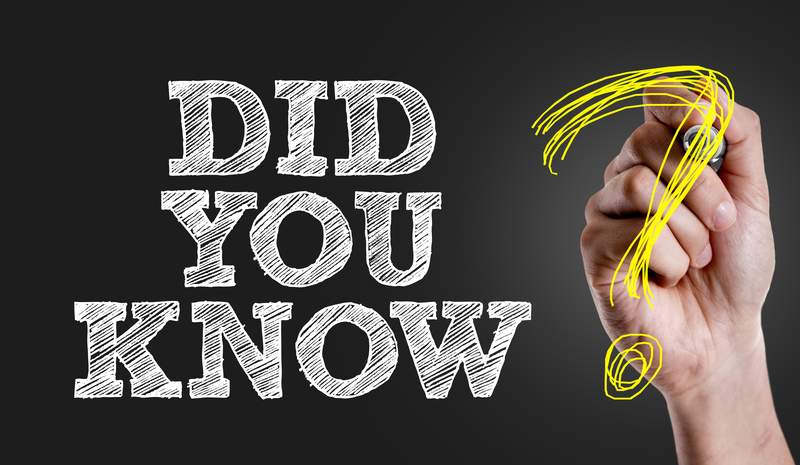The Hidden Perils of Moving Pianos: Ditch the DIY Plan
Posted on 22/06/2025
The Hidden Perils of Moving Pianos: Ditch the DIY Plan
Introduction: The Allure and Risks of Moving a Piano Yourself
There are few instruments richer in history and value than the piano. Whether you're an accomplished musician, a passionate hobbyist, or the lucky inheritor of a family heirloom, your upright or grand piano is likely one of the most treasured pieces in your home. It can also be among the heaviest and most complex. If you're feeling ambitious, you might be tempted to save money with a DIY piano move. However, moving a piano by yourself can quickly turn from a bold adventure to a costly, dangerous fiasco. In this comprehensive guide, we'll reveal the hidden perils of moving pianos and explain why ditching the do-it-yourself plan is the smartest, safest decision you can make.

Why Are Pianos So Difficult to Move?
At first glance, a piano might look like just another large piece of furniture. Think again. Pianos are incredibly complex instruments constructed from thousands of intricate parts. There are several reasons why moving pianos is uniquely challenging:
- Sheer weight: Pianos typically weigh between 300 and 1,400 pounds, depending on the model.
- Uneven weight distribution: Most of a piano's weight is concentrated in the cast iron harp and the lower half, making it easy to tip over if not properly handled.
- Fragile components: The delicate internal mechanisms--strings, hammers, soundboard, pedals--can suffer irreparable damage from bumps or improper handling.
- Bulky shape: The large, awkward dimensions of pianos make moving them through doorways or around corners especially hazardous.
These factors explain why moving a piano is not your average DIY task. But what are the real risks if you try to go it alone?
The Hidden Dangers: What Goes Wrong When You Move a Piano Yourself
While the idea of moving a piano yourself might seem like a straightforward way to save on moving expenses, the reality tells a different story. Here are some of the hidden perils associated with DIY piano moves.
1. Serious Injury and Physical Harm
Personal safety is the most critical concern. Pianos can cause:
- Back injuries: Lifting hundreds of pounds without the proper technique or assistance can lead to herniated discs, muscle strains, and long-term back problems.
- Crushed fingers or hands: One sudden slip or miscalculation can trap body parts beneath a falling piano lid or body, resulting in broken bones or nerve damage.
- Slips, trips, and falls: Navigating stairs, ramps, or uneven surfaces while carrying a piano is a recipe for accidents--sometimes catastrophic ones.
It's no surprise that hospitals treat countless DIY movers for piano-related injuries each year.
2. Irreversible Damage to Your Piano
Your piano is more than just heavy--it's fragile and expensive to repair. The risks include:
- Soundboard cracks: One hard bump can crack the soundboard, drastically altering the instrument's tone, resonance, and value.
- Smashed legs or pedals: Dropping a piano even a few inches can snap delicate legs or shatter intricate pedal assemblies.
- Broken strings and hammers: Even minor jostling can disrupt the piano's hundreds of finely tuned strings and hammers.
- Cabinet or veneer damage: Scratches, gouges, and dents are unsightly and expensive to restore.
Consider this-- repairing a cracked piano soundboard or smashed key assembly typically costs more than hiring professionals to move the piano in the first place.
3. Property Damage: More Than Scratched Floors
The cost of moving a piano yourself can also show up in unexpected property damage:
- Gouged or scratched floors, especially with hardwood or tile surfaces.
- Dented walls and damaged doorways: It's easy to misjudge a tight squeeze or stair landing with a bulky, heavy object.
- Broken stairs or railings: The concentrated weight of a piano can crack steps or compromise structural supports.
- Stained or ruined carpets: Old pianos, especially uprights, can leak oil or small pieces of felt, causing lasting stains.
Insurance policies may not fully cover cosmetic or structural damage caused by self-moves. You may be left footing the bill for expensive repairs.
4. Poor Handling Means Losing Piano Value
Any mishandling--even if it doesn't cause obvious physical damage--may decrease your piano's market or sentimental value. Today's buyers and collectors know how to spot the signs of rough handling, and a history of poor moves will show in the sound and playability as well as the appearance.
The True Cost of a DIY Piano Move: Calculating the Risks
Many households consider moving a piano themselves as a cost-saving option. However, when you calculate the potential expenses, the numbers quickly add up:
- Rental equipment: Heavy-duty moving dollies, straps, ramps, and padding must be rented or purchased.
- Truck rental: Standard moving trucks often lack the necessary tie-downs or lift gates for pianos, resulting in additional fees.
- Repair costs: Piano repairs are notoriously expensive (often thousands of dollars for moderate to severe damage).
- Medical bills: Trips to the ER can turn into thousands for uninsured movers.
- Property damage: Replacing a hardwood floorboard, door frame, or stair tread can cost hundreds each.
- Lost value: Even minor dings can reduce a piano's resale or trade-in value by hundreds to thousands of dollars.
What seems like "free labor" can easily translate to major expenses and regret--all for trying to avoid the relatively modest fee of professional piano movers.
The Expertise of Professional Piano Movers: Why It Matters
So, why should you ditch the DIY plan and hire professionals instead? Expert piano movers bring more to the table than brute strength:
- Specialized training: Professional piano movers have in-depth knowledge of different piano types, weight distributions, and the best angles and positioning for transport.
- Purpose-built equipment: From heavy-duty dollies to custom skid boards and locking straps, movers use gear designed specifically to protect your instrument.
- Disassembly and reassembly: Grand pianos, in particular, often require the careful removal of legs, pedals, and lyres by trained hands.
- Insurance coverage: Reputable moving companies insure your piano in case of problems--an irreplaceable peace of mind.
- Efficient teamwork: Trained crews work together with precision, drastically reducing the risk of damage or injury.
Let the pros handle the heavy lifting. The small investment in expert movers protects your health, your home, and your precious piano.
Common Piano Moving Myths (and the Facts You Need)
Still tempted to go the do-it-yourself piano moving route? There are many misconceptions circulating online. Let's separate the myths from the facts:
- Myth: "With enough friends, we can lift anything."
Fact: Teamwork is great, but untrained helpers are far more likely to make mistakes, slip, or lose grip during difficult maneuvers. - Myth: "We'll just slide it carefully on a blanket."
Fact: Sliding can ruin both the piano's legs and your flooring. Plus, most pianos can't be moved safely without proper mounting and support. - Myth: "We only have a few stairs, so it won't be tough."
Fact: Even a single step or tight landing can cause a catastrophic tip or fall, especially with grand pianos! - Myth: "I watched a YouTube video; I know how to do it."
Fact: Online tutorials can make moving look simple, but improper technique is a leading cause of injuries and instrument damage.
How Professional Movers Prepare for a Piano Move
If you're curious about the process, here's how reputable movers approach the job:
- Assessment: Movers start with an in-person or virtual walkthrough to identify obstacles, measure doorways, and plan the route.
- Piano preparation: Pianos are stabilized, parts are secured, and critical components are wrapped and padded.
- Precision lifting: With multiple trained movers, heavy-duty dollies, and custom skids, the piano remains balanced at every step.
- Transportation: Movers secure the piano inside a specialized vehicle with anchor points and extra padding.
- Placement and setup: At your destination, the piano is reassembled (if necessary), tuned (if requested), and placed exactly where you want it.
Trusting the pros means your instrument arrives in the same pristine condition it left, giving you peace of mind and saving countless hours and headaches.
Frequently Asked Questions About Moving Pianos
To help you make an informed decision, here are answers to some of the most common questions about piano moving:
Do all pianos require professional movers?
While smaller keyboards can be managed by individuals, any acoustic piano--upright or grand--should always be moved by professionals to avoid damage and injury.
How much does it cost to hire a professional piano mover?
Costs vary depending on distance, complexity, and piano size, but hiring a mover generally ranges from $200 to $1,200. This is far less than the cost of repairs or medical bills from a failed DIY attempt!
Is my piano insured during a professional move?
Reputable piano movers carry specialized insurance to cover damage or loss during the move. Always confirm the details with your mover beforehand.
Will moving my piano affect its tuning?
All pianos--whether moved professionally or DIY--usually require tuning after relocation. Professional movers can often recommend or arrange tuning services as part of their package.

Conclusion: Invest in Safety and Peace of Mind--Leave Piano Moves to the Experts
In the debate between a DIY piano move and hiring experienced movers, the evidence is clear. Attempting to move your own piano risks not just your instrument, but your health, home, and financial security. Professional piano movers possess the skills, tools, and training to ensure a safe, stress-free relocation--preserving the beauty and value of your cherished piano.
Instead of gambling with costly repairs or potential injuries, ditch the DIY plan and let the experts handle the keys. Your piano--and your back--will thank you.
Ready to Move Your Piano? Contact Trusted Professionals Today
Protect your investment and enjoy peace of mind. Call your local piano moving specialists to request a quote, schedule your move, and get expert advice tailored to your instrument and your home. Don't take unnecessary risks--let professional movers make your piano relocation safe and smooth.












